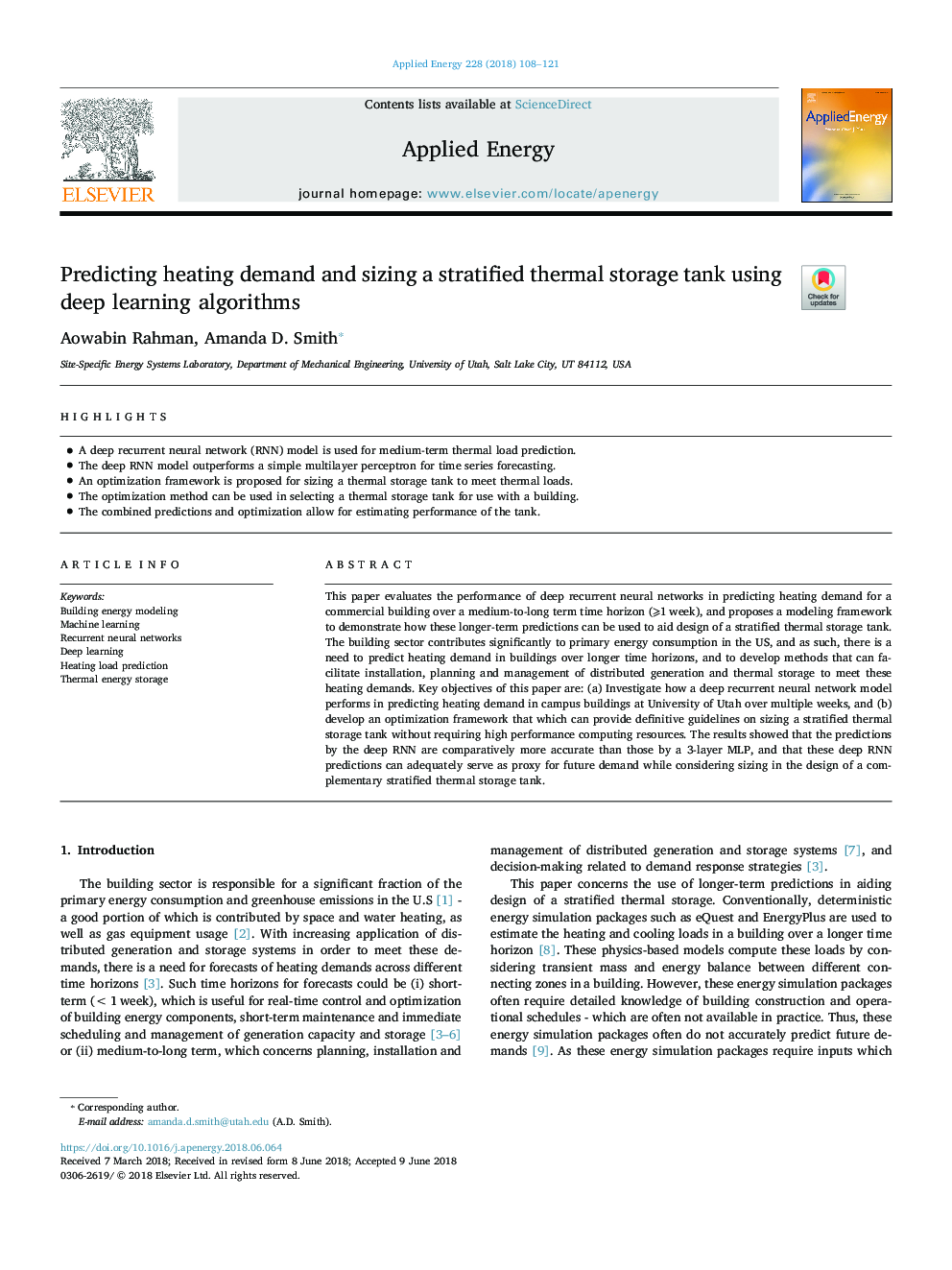| Article ID | Journal | Published Year | Pages | File Type |
|---|---|---|---|---|
| 6679693 | Applied Energy | 2018 | 14 Pages |
Abstract
This paper evaluates the performance of deep recurrent neural networks in predicting heating demand for a commercial building over a medium-to-long term time horizon (⩾1â¯week), and proposes a modeling framework to demonstrate how these longer-term predictions can be used to aid design of a stratified thermal storage tank. The building sector contributes significantly to primary energy consumption in the US, and as such, there is a need to predict heating demand in buildings over longer time horizons, and to develop methods that can facilitate installation, planning and management of distributed generation and thermal storage to meet these heating demands. Key objectives of this paper are: (a) Investigate how a deep recurrent neural network model performs in predicting heating demand in campus buildings at University of Utah over multiple weeks, and (b) develop an optimization framework that which can provide definitive guidelines on sizing a stratified thermal storage tank without requiring high performance computing resources. The results showed that the predictions by the deep RNN are comparatively more accurate than those by a 3-layer MLP, and that these deep RNN predictions can adequately serve as proxy for future demand while considering sizing in the design of a complementary stratified thermal storage tank.
Keywords
Related Topics
Physical Sciences and Engineering
Energy
Energy Engineering and Power Technology
Authors
Aowabin Rahman, Amanda D. Smith,
